#I keep thinking about that post about how Michael wishes he was an insignificant angel so he could’ve had the freedom that Baal did
Text
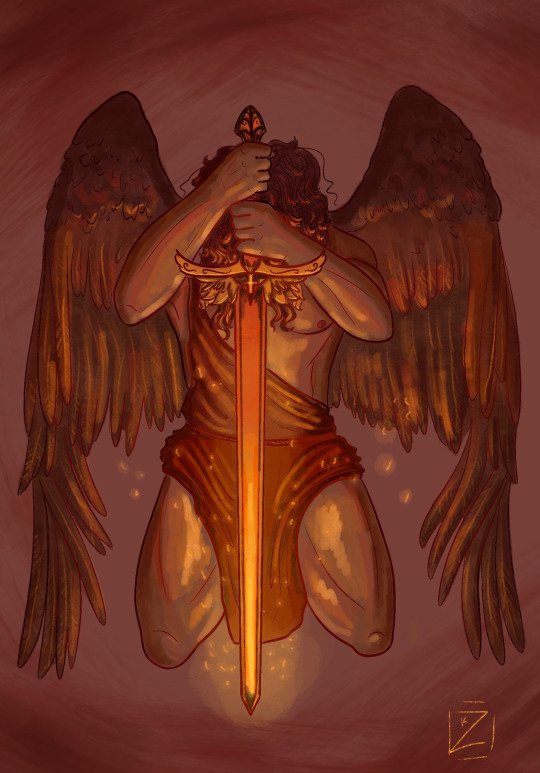
The Sword of God
Michael from @nicosraf s Angels Trilogy 🫶
#I keep thinking about that post about how Michael wishes he was an insignificant angel so he could’ve had the freedom that Baal did#and how the sword of god can only ever be one thing#gon dammin#it makes me so sad#like he can never belong to anyone else#angels and man#angels before man#mine#archangel michael
123 notes
·
View notes
Text
The Poetry Of BLADE RUNNER 2049
Warning: This piece contains major Blade Runner 2049 spoilers. “Sometimes to love someone you gotta be a stranger.” By PRISCILLA PAGE Oct. 14, 2017
But in the case / Of my white fountain what it did replace / Perceptually was something that, I felt, / Could be grasped only by whoever dwelt / In the strange world where I was a mere stray.
Vladimir Nabokov, Pale Fire
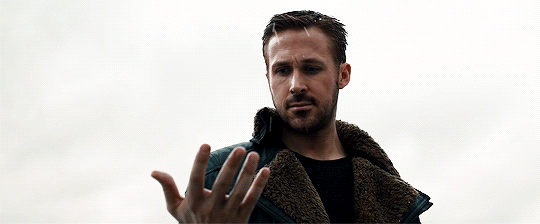
In Pale Fire, the fictional poet John Shade sees a tall white fountain during a near-death experience - the image’s “presence always would / Console [him] wonderfully.” Later Shade reads about a woman in a magazine who came close to death, who visited “the Land Beyond the Veil” and also glimpsed a “tall white fountain” there. Shade finds the woman to share this with her, only to discover it was a misprint - it was not a “fountain” but a “mountain” that she saw. But the error changes nothing: the image of the tall white fountain had meaning not because it had some objective significance, not because it was empirical proof of an afterlife, but because Shade ascribed meaning to it. The fictional scholar annotating John Shade’s poem, Dr. Charles Kinbote, writes: “We all are, in a sense, poets.”
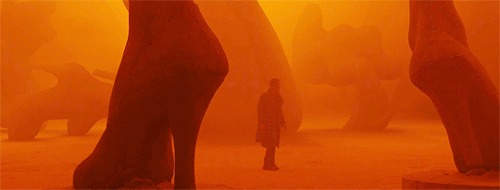
And Denis Villeneuve’s Blade Runner 2049 is a poem. It’s a neo-noir about the mystery of the self, empathy, connection, how we define what’s real, whether it matters at all. And it’s a love story about a replicant and a digital woman. Screenwriter Hampton Fancher explained that, “[K] is a handbook. He follows the rules. He’s a machine in a way. But the image was this: A handbook turns into a poem through his experiences and his ordeal and love. And the same thing with the digital woman.” While retiring an old-model replicant, Ryan Gosling’s blade runner K discovers the skeleton of a replicant who bore a child: a miracle. His superior, Lieutenant Joshi (Robin Wright), orders him to find and kill the child. But the mystery evolves when K begins to think he might be this miracle child of Rachael (Sean Young) and Rick Deckard (Harrison Ford). He finds Deckard living in a rundown casino, hoping his questions will be answered. He meets Deckard’s dog, who has a taste for whiskey. “Is it real?” K inquires. Deckard responds: “I don’t know. Ask him.” Deckard’s answer is a joke, but it’s also a kōan that illuminates Blade Runner 2049.

Unlike the ambiguity of Deckard’s identity, K knows that he’s a replicant. The people who inhabit his world are shadows. The LAPD, Niander Wallace’s corporation, and a replicant rebellion are three dehumanizing forces in conflict: bureaucracy, capitalism, war. Lieutenant Joshi believes in a wall between humankind and replicants, and the preservation of order at any cost. She wants the miracle child killed, erased. The replicant rebellion wants the child alive, but Hiam Abbass’s Freysa wants Deckard dead in order to keep her identity safe. And “industrialist” Niander Wallace (Jared Leto) wants the child so he can dissect her to reveal Tyrell’s secret to creating replicants capable of reproduction. He envies women’s natural ability to create. He’s a Dr. Frankenstein without figurative or literal vision. More than a scientist or a visionary, he is a capitalist commodifying beings, a colonist who wants humans to conquer the stars with replicant slaves. Wallace eviscerates a newborn replicant because she’s incapable of procreating. “A barren pasture. Dead space between the stars,” he explains, reducing his “angel” to her reproductive function.

Blade Runner 2049’s world is haunted by Niander Wallace’s intentions, by dehumanization, by the ghosts of digital women. This is a world where an orphanage is found in the city’s waste-processing district, its children reduced to slave laborers. This is a dystopian hell for women as well, but it foresees a future that belongs to them. Carla Juri’s Dr. Ana Stelline, the miracle child, is a woman, a revelation that subverts our story - and gender - expectations. And the miracle of Dr. Stelline is not just in the details of her birth, but in her empathy. At Stelline Laboratory, she lives in a glass case, manufacturing memories for replicants, creating literal joy for her kind, each memory an act of love, an art form. It is illegal to implant real memories, but Stelline does it anyway, sharing her own happy memories with them. Replicants live such hard lives, she explains to K, but at least she can give them good memories.
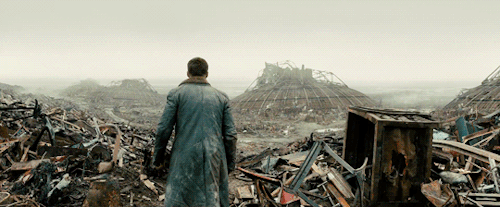
Dr. Stelline is perhaps Blade Runner 2049’s only remarkable character. No one shines like Rutger Hauer’s magnetic Roy Batty, and no one should. Roy Batty was Blade Runner’s Byronic hero, like Satan in Paradise Lost - and in saving Deckard’s life, he became a Christ figure. But K is Kafka’s Joseph K, navigating alienation, disorientation, anxiety, and banality in an absurd, bureaucratic, deadening universe. K is a replicant engineered to obey, “happy scraping the shit because [he’s] never seen a miracle,” but he becomes an “it” who aspires to be a “he” when he starts to believe he’s the miracle. K wishes he had a name, a mother. K hopes that he was born and not made, because then he might have a soul. Joshi tells him: “You’ve been getting on fine without one.”

Screenwriter Michael Green explained that Blade Runner 2049 was about a “character’s aspiration toward ascension.” Like John Shade discovering that his near-death vision was not shared, K realizes that his memory of a wooden horse didn’t belong to him after all. It means he is not Rachael’s child, that he’s not a miracle, not special after all, but it no longer matters. The moment K thinks he is more and wants to be more, he becomes more. His perception is reality. It reprograms him.

Discussing K’s digital companion Joi (Ana de Armas), Green said, “since we are defined by what we love, what [K] loved needed a story as well.” To the world, K is just a “skinjob.” To Joi, he’s a poem. She calls his DNA “the alphabet of you.” She tells him, “I always knew you were special.” If replicants are considered a secondary species, these digital women are tertiary, even more reviled. The sex worker Mariette (Mackenzie Davis) tells her, “I’ve been inside you. Not so much there as you think.”

Mariette’s comment reflects the disdain this world has for A.I. like Joi, but it also reveals that, like K, Joi believes she is more. Some will always doubt Joi’s sentience. But Joi loves the emanator, the gift that allows her to roam. She feels pleasure seeing raindrops on her digital skin. There is real wonder on her face when she looks out the window of K’s car, seeing the city and the sky for the first time, a response that isn’t for K’s benefit. Hiring Mariette so she can be intimate with K is her idea. “I want to be real for you,” she tells him. He responds: “You are real for me.” And she risks everything for K when she asks him to delete her from his apartment console so no one can use her memories to find him. She will only exist on the emanator, and if something happens to it, K explains, she will be gone. “Yes, like a real girl,” she responds. Joi’s death is a kind of Rorschach or a Voight-Kampff for the audience, testing whether we respond as if she’s a being with feelings, whether we empathize, grieve. Like Deckard’s dog kōan, if Joi perceives that she is “a real girl,” that she has a self, that she loves K, if her suffering and her wonder and her love feel real to her, then she is a real being with consciousness, as real as a replicant, a dog, or a human.
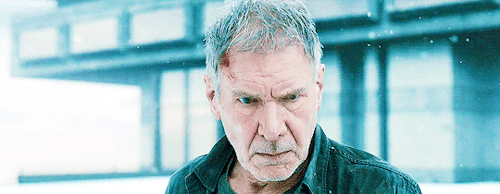
K’s love for Joi parallels Deckard’s love for Rachael. Niander Wallace’s hench-replicant Luv (Sylvia Hoeks) calls Rachael “unremarkable,” but Deckard disagrees. When Wallace offers him a cloned replicant of Rachael in exchange for his child, Deckard declines. She’s not the same. “I know what’s real,” he tells Wallace. She was special, remarkable, irreplaceable because Deckard loved her. K experiences the same disconnect in the scene that follows: he meets a giant advertisement for another Joi. She looks like his Joi, calls him “a nice Joe” as Joi once did, but it’s not the same for him, either. In this moment, maybe K questions whether his Joi ever really loved him at all. But maybe it doesn’t matter, because the love he felt for her was real. This Joi is not the same as his Joi. It’s the moment K decides to pursue Deckard - not to follow Freysa’s orders to kill him, but to help Deckard meet his daughter.
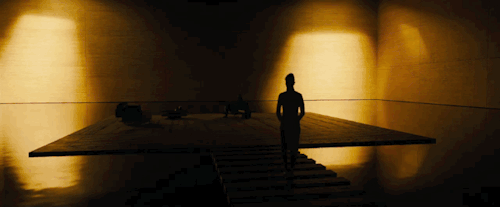
Freysa tells K: “dying for the right cause is the most human thing we can do.” To her, the “right cause” is war against humankind. To Joi and K, the right cause is love. Joi risks her existence and dies trying to protect K. K dies for love, but it’s not his own - it’s for the love of a father and a child, near-strangers to him. He knows that he isn’t the chosen one, and he helps Deckard meet Stelline regardless. In a pale echo of Roy Batty’s death scene, he dies alone, without the monologue or audience afforded Batty. Just the pleasure of feeling snow on his skin for the last time. Inside Stelline Laboratory, digital snow falls in Stelline’s glass case, and her wonder at this false snow is just as real as K’s. Though K may not be special in the way that Stelline is, K’s selfless act and his shared experience of snow with Stelline make this moment feel sacrosanct.

In his search for Deckard, K finds himself walking through the ruins of a city suffocated by radioactive yellow haze. A bee lands on his hand. He continues on and finds apiaries of bees, and he lets the bees cover his hand. The bees echo the replicants, the concept of hive mind. But they also represent hope, connection, “cells interlinked.” The bee is such a small, seemingly insignificant thing, with an enormous purpose: sustaining life. “Do you dream about being interlinked?” the post-traumatic baseline test asks K. The question essentially asks whether K dreams of being, whether he dreams of being connected to others. When Blade Runner 2049 begins, K is literally asleep at the wheel, and he doesn’t even consider the old-model replicant Sapper Morton his own kind, he passes the baseline test. But the handbook becomes a poem. By the film’s end, K rejects Niander Wallace’s idea of replicants as a “product,” he rejects Freysa’s commitment to war between species, he rejects Joshi’s notion that there’s a “wall” between beings. “We’re all just looking out for what’s real,” Joshi tells K. And what’s real to K is love.

62 notes
·
View notes